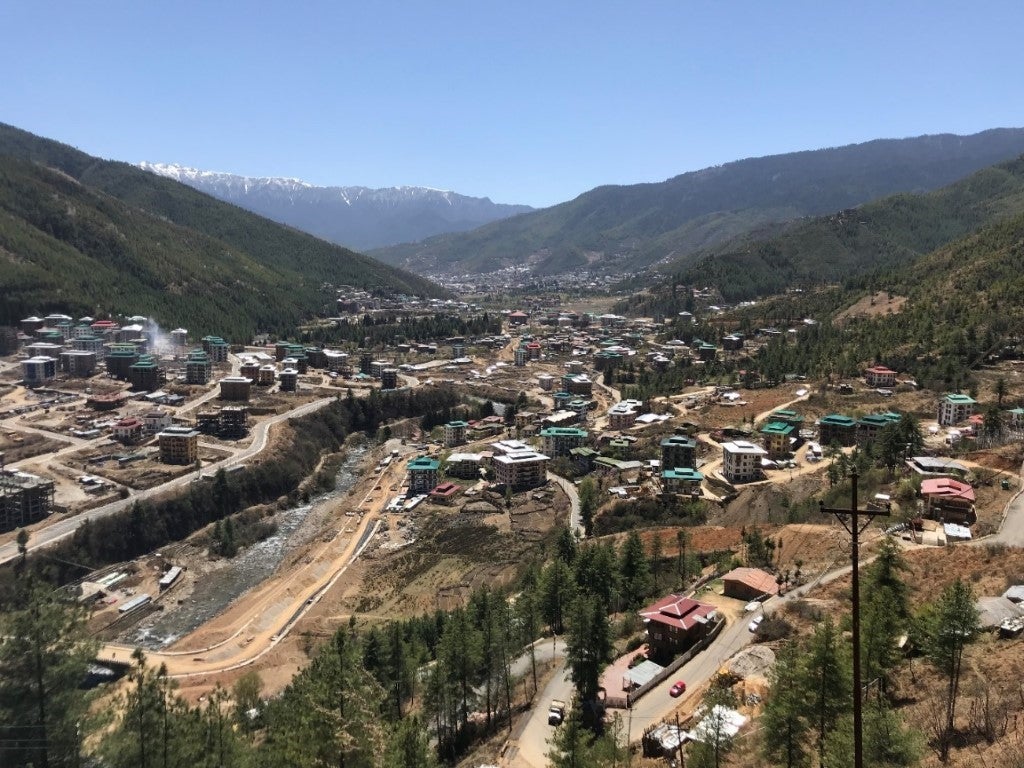 Thimphu
Thimphu
Flying to Bhutan on Drukair, the country’s national carrier, one might notice an advertisement in the inflight magazine, Tashi Delek (Good Luck) that boasts Bhutan’s flagship information technologies (IT) development, the Thimphu Tech Park.
A data and ICT hub launched in 2012 in the capital city, the tech park supports the business needs of ICT and knowledge-based start-ups providing consulting services, incubator spaces, and regulatory advice.
Employing more than 700 people, Thimphu Tech Park buttresses Bhutan’s nascent ICT sector and seeks to leverage the country’s abundant electricity as well as its new generation of young, tech-savvy and entrepreneurial English speakers for international investment opportunities.
Twenty years ago, Thimphu opened its first internet cafe, just a year after the government allowed broadcast television transmission. Three years later, in 2003, cell phone coverage was introduced.
While more than half of Bhutan’s 681,720 people work in agriculture, services and manufacturing drive economic activity and account for 87 percent of the country’s GDP.
Now, while more than half of Bhutan’s 681,720 people work in agriculture, services and manufacturing drive economic activity and account for 87 percent of the country’s gross domestic product —and rising thanks to growing hydropower exports to India.
The burgeoning services sector clusters mostly around cities, making Bhutan the fastest urbanizing country in South Asia. People and firms are concentrating primarily in Thimphu (population 114,551) and the border town of Phuentsholing (pop. 27,658).
Thimphu bustles with activity. Families shop and chat with friends along the city’s main road, Norzin Lam, which steadily gathers more shade as each multistory office building sprouts along its edges.
At the southern end of Norzin Lam, just up from the new 550-space municipal parking structure, teenagers relax with smartphones in hand on amphitheater steps and under the trees in the central plaza.
However, economic growth from the service sector has not eliminated the country’s major challenges.
While Bhutan is small (about the size of Switzerland), its landlocked and mountainous topography makes it expensive and time-consuming to move people, goods, and information and access domestic and international markets.
The burgeoning services sector clusters mostly around cities, making Bhutan the fastest urbanizing country in South Asia. People and firms are concentrating primarily in Thimphu and Phuentsholing.
Furthermore, the private sector consists almost entirely of micro and small firms, with prestigious and high-paying jobs concentrated in the public sector.
And while investments in hydropower and the sale of electricity to neighboring India provide, for now, much needed public revenue, they will create relatively few jobs.
To create more employment opportunities, services must continue to expand. This growth, however, will affect cities, which already face higher traffic congestion, air and water pollution, scarcer land, more expensive housing, and increasing pressure for reliable basic infrastructure and services.
Amidst these rapid changes, managing the quality of life in urban centers like Thimphu and Phuentsholing and careful city planning can sustain Bhutan’s economic growth, while keeping cities clean, orderly, and socially inclusive.


Join the Conversation